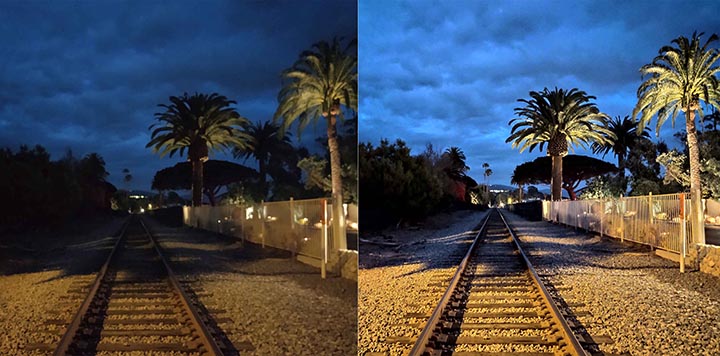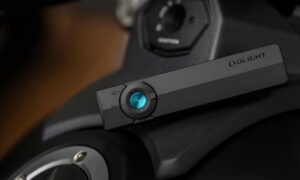In an age where security is paramount, cameras with night vision mode have become essential tools for protecting homes, businesses, and properties. These cameras ensure that security remains intact at all times, even in the absence of natural light. As technology continues to evolve, the quality and capabilities of night vision cameras have improved, making them more reliable and accessible than ever. Whether you’re looking to secure your home or monitor your business, understanding how night vision mode works and what to look for in these cameras can significantly impact the effectiveness of your security system.
How Night Vision Mode Works
Night vision cameras are designed to capture clear images in low-light or no-light environments. They utilize infrared (IR) technology to illuminate the area in complete darkness. Infrared light is emitted by small LED lights on the camera, which is invisible to the human eye. The camera sensor then detects the reflected infrared light, enabling it to capture clear images despite the absence of visible light. The infrared illumination is typically adjustable, providing flexibility based on the level of darkness and the specific needs of the environment.
There are two main types of night vision technology used in security cameras: Active Infrared (IR) and Passive Infrared (PIR). Active infrared uses IR LEDs to illuminate the area, while PIR sensors detect heat signatures from moving objects. Active infrared is more common in surveillance cameras because of its reliability and ability to work in complete darkness.
Cameras with night vision mode also typically feature high-definition (HD) or 4K resolution capabilities, allowing for detailed images even in low-light conditions. The combination of night vision and high-quality video recording ensures that you can monitor your property with clarity, whether it’s day or night.
Benefits of Using Cameras with Night Vision Mode
One of the primary reasons why cameras with night vision mode are increasingly popular is their ability to provide 24/7 surveillance. Traditional security cameras often fail to deliver clear images in low-light conditions. This limitation can leave areas unmonitored during nighttime, when security risks are typically higher. Night vision cameras eliminate this problem by offering reliable surveillance, ensuring that your property is always under watch, no matter the time of day.
These cameras are also invaluable in preventing and solving crimes. Criminals often operate under the cover of darkness to avoid detection. With night vision cameras, you can capture clear images or videos of potential intruders or suspicious activities, even in pitch-black conditions. This makes it easier to identify perpetrators, report incidents to authorities, and provide evidence for legal purposes.
Additionally, cameras with night vision mode are often equipped with motion detection features, which can further enhance security. By detecting motion in low-light environments, these cameras can alert you to any unusual activity, enabling you to take immediate action if necessary.
Choosing the Right Night Vision Camera for Your Needs
When selecting cameras with night vision mode, it’s important to consider various factors to ensure you get the best performance for your specific needs. The first factor to consider is the camera’s range. Night vision cameras come with varying IR illumination ranges, which determine how far the infrared light can reach and how much of the surrounding area the camera can monitor. Some cameras are designed to capture images up to 30 feet away, while others may have a range of up to 100 feet or more. If you’re looking to monitor a large area or want to keep an eye on outdoor spaces, such as driveways, parking lots, or yards, choosing a camera with a longer IR range is essential.
Another consideration is the camera’s resolution. Higher resolution cameras, such as 1080p or 4K, offer more detailed and clearer images, which can be especially useful in identifying faces, vehicles, or license plates. While 1080p resolution is usually sufficient for most security needs, higher resolutions may be necessary if you require more detailed monitoring, particularly in large areas or areas with high foot traffic.
It’s also crucial to evaluate the camera’s durability and weatherproof features. Cameras with night vision mode are often placed outdoors to monitor exteriors or large properties, meaning they should be able to withstand various weather conditions. Look for cameras with weather-resistant or IP-rated enclosures that can handle rain, snow, or extreme temperatures. Additionally, consider the power source for the camera. Some cameras operate on batteries, while others are hardwired into your electrical system. Battery-powered cameras offer more flexibility in terms of placement, while wired cameras may offer more reliable performance in the long run.
Lastly, consider the camera’s integration with your existing security system. Many modern cameras with night vision mode can connect to smart home systems, allowing you to monitor your property remotely from a smartphone, tablet, or computer. Integration with your alarm system or other security devices can provide a more comprehensive security solution that allows you to take action quickly if needed.
Applications of Night Vision Cameras
Night vision cameras are used in various environments and applications, from residential homes to commercial properties and public spaces. For homeowners, installing cameras with night vision mode can enhance security by providing clear footage of any potential threats, even when it’s dark outside. Whether you’re monitoring the exterior of your home or keeping an eye on your driveway, these cameras offer an added layer of protection.
In commercial settings, businesses can benefit from using cameras with night vision mode to safeguard their premises. Whether you’re running a retail store, warehouse, or office building, these cameras can help monitor entrances, exits, and critical areas around the clock. The ability to record clear footage of intruders or unauthorized access in low-light conditions can assist in preventing theft, vandalism, or other criminal activities.
Public spaces, such as parking lots, streets, and parks, can also benefit from the use of night vision surveillance. Local governments and law enforcement agencies often install these cameras to deter crime and provide a valuable source of evidence in the event of an incident. The ability to capture high-quality footage at all hours of the day ensures that public safety remains a priority.




























